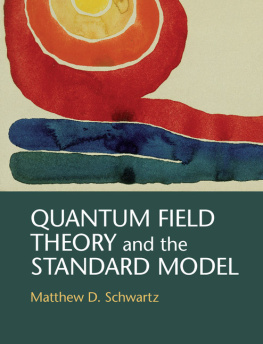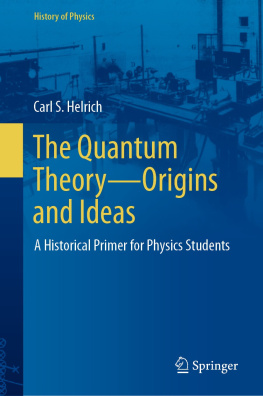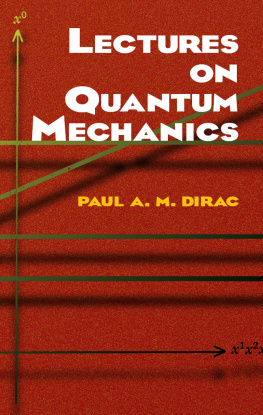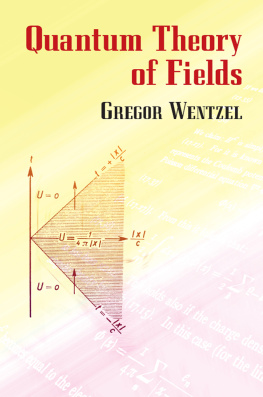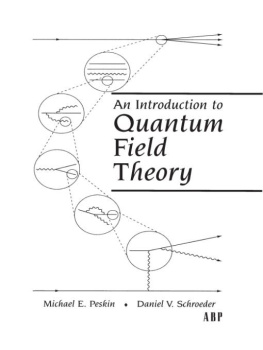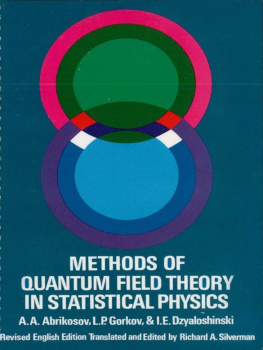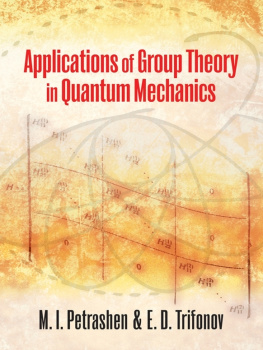Quantum Field Theory and the Standard Model

Providing a comprehensive introduction to quantum field theory, this textbook covers the development of particle physics from its foundations to the discovery of the Higgs boson. Its combination of clear physical explanations, with direct connections to experimental data, and mathematical rigor make the subject accessible to students with a wide variety of backgrounds and interests. Assuming only an undergraduate-level understanding of quantum mechanics, the book steadily develops the Standard Model and state-of-the art calculation techniques. It includes multiple derivations of many important results, with modern methods such as effective field theory and the renormalization group playing a prominent role. Numerous worked examples and end-of-chapter problems enable students to reproduce classic results and to master quantum field theory as it is used today. Based on a course taught by the author over many years, this book is ideal for an introductory to advanced quantum field theory sequence or for independent study.
MATTHEW D. SCHWARTZ is an Associate Professor of Physics at Harvard University. He is one of the worlds leading experts on quantum field theory and its applications to the Standard Model.
Quantum Field Theory and the Standard Model

MATTHEW D. SCHWARTZ
Harvard University


University Printing House, Cambridge CB2 8BS, United Kingdom
Published in the United States of America by Cambridge University Press, New York
Cambridge University Press is part of the University of Cambridge.
It furthers the Universitys mission by disseminating knowledge in the pursuit of education, learning, and research at the highest international levels of excellence.
www.cambridge.org
Information on this title: www.cambridge.org/9781107034730
M. Schwartz 2014
This publication is in copyright. Subject to statutory exception and to the provisions of relevant collective licensing agreements, no reproduction of any part may take place without the written permission of Cambridge University Press.
First published 2014
Printed and bound in the United States of America by Sheridan Inc.
A catalog record for this publication is available from the British Library
Library of Congress Cataloging in Publication data
Schwartz, Matthew Dean, 1976
Quantum field theory and the standard model / Matthew D. Schwartz.
pages cm
ISBN 978-1-107-03473-0 (hardback)
1. Quantum field theory Textbooks. 2. Particles (Nuclear physics) Textbooks. I. Title.
QC174.45.S329 2014
530.143dc23
2013016195
ISBN 978-1-107-03473-0 Hardback
Cambridge University Press has no responsibility for the persistence or accuracy of URLs for external or third-party internet websites referred to in this publication, and does not guarantee that any content on such websites is, or will remain, accurate or appropriate.
To my mother,
and to Carolyn, Eve and Alec
Preface
Quantum field theory (QFT) provides an extremely powerful set of computational methods that have yet to find any fundamental limitations. It has led to the most fantastic agreement between theoretical predictions and experimental data in the history of science. It provides deep and profound insights into the nature of our universe, and into the nature of other possible self-consistent universes. On the other hand, the subject is a mess. Its foundations are flimsy, it can be absurdly complicated, and it is most likely incomplete. There are often many ways to solve the same problem and sometimes none of them are particularly satisfying. This leaves a formidable challenge for the design and presentation of an introduction to the subject.
This book is based on a course I have been teaching at Harvard for a number of years. I like to start my first class by flipping the light switch and pointing out to the students that, despite their comprehensive understanding of classical and quantum physics, they still cannot explain what is happening. Where does the light comes from? The emission and absorption of photons is a quantum process for which particle number is not conserved; it is an everyday phenomenon which cannot be explained without quantum field theory. I then proceed to explain (with fewer theatrics) what is essentially of this book. As the course progresses, I continue to build up QFT, as it was built up historically, as the logical generalization of the quantum theory of creation and annihilation of photons to the quantum theory of creation and annihilation of any particle. This book is based on lecture notes for that class, plus additional material.
The main guiding principle of this book is that QFT is primarily a theory of physics, not of mathematics, and not of philosophy. QFT provides, first and foremost, a set of tools for performing practical calculations. These calculations take as input measured numbers and predict, sometimes to absurdly high accuracy, numbers that can be measured in other experiments. Whenever possible, I motivate and validate the methods we develop as explaining natural (or at least in principle observable) phenomena. Partly, this is because I think having tangible goals, such as explaining measured numbers, makes it easier for students to understand the material. Partly, it is because the connection to data has been critical in the historical development of QFT.
The historical connection between theory and experiment weaves through this entire book. The great sucess of the Dirac equation from 1928 was that it explained the magnetic dipole moment of the electron (). The agreement of QFT and the Standard Model with data over the past half century has been truly astounding.
Beyond the connection to experiment, I have tried to present QFT as a set of related tools guided by certain symmetry principles. For example, Lorentz invariance, the symmetry group associated with special relativity, plays a essential role. QFT is the theory of the creation and destruction of particles, which is possible due to the most famous equation of special relativity E = mc2. Lorentz invariance guides the definition of particle (. Unitarity is closely related to other appealing features of our description of fundamental physics, such as causality, locality, analyticity and the cluster decomposition principle. While unitarity and its avatars are persistent themes within the book, I am cautious of giving them too much of a primary role. For example, it is not clear how well cluster decomposition has been tested experimentally.
I very much believe that QFT is not a finished product, but rather a work in progress. It has developed historically, it continues to be simplified, clarified, expanded and applied through the hard work of physicists who see QFT from different angles. While I do present QFT in a more or less linear fashion, I attempt to provide multiple viewpoints whenever possible. For example, I derive the Feynman rules in five different ways: in classical field theory ().
(matching, with Schwinger proper time, and with Feynman path integrals). As different students learn in different ways, providing multiple derivations is one way in which I have tried to make QFT accessible to a wide audience.
Next page
